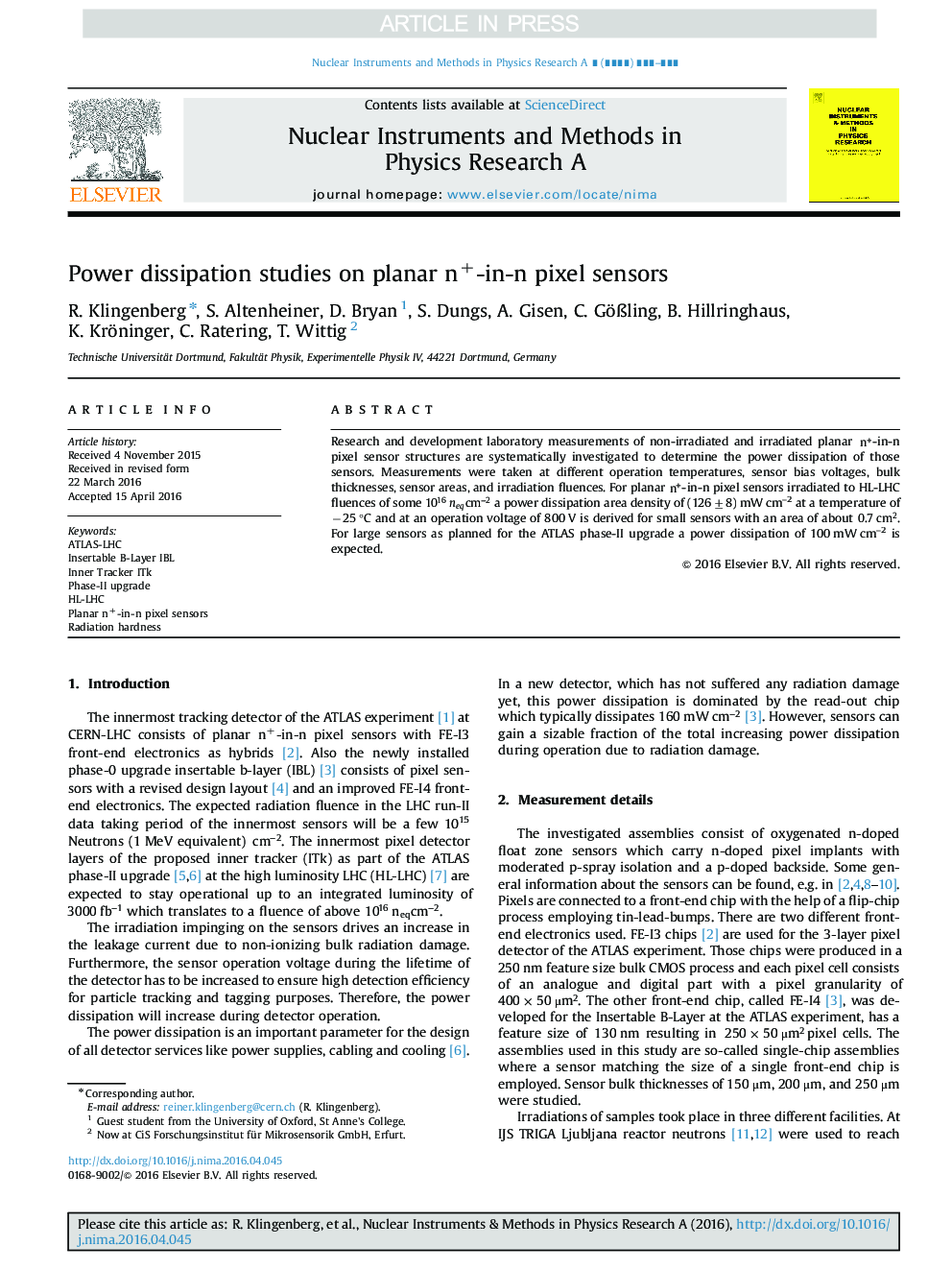| Article ID | Journal | Published Year | Pages | File Type |
|---|---|---|---|---|
| 8168671 | Nuclear Instruments and Methods in Physics Research Section A: Accelerators, Spectrometers, Detectors and Associated Equipment | 2016 | 6 Pages |
Abstract
Research and development laboratory measurements of non-irradiated and irradiated planar n+-in-n pixel sensor structures are systematically investigated to determine the power dissipation of those sensors. Measurements were taken at different operation temperatures, sensor bias voltages, bulk thicknesses, sensor areas, and irradiation fluences. For planar n+-in-n pixel sensors irradiated to HL-LHC fluences of some 1016neqcmâ2 a power dissipation area density of (126±8) mW cm-2 at a temperature of â25 °C and at an operation voltage of 800 V is derived for small sensors with an area of about 0.7cm2. For large sensors as planned for the ATLAS phase-II upgrade a power dissipation of 100 mW cm-2 is expected.
Keywords
Related Topics
Physical Sciences and Engineering
Physics and Astronomy
Instrumentation
Authors
R. Klingenberg, S. Altenheiner, D. Bryan, S. Dungs, A. Gisen, C. GöÃling, B. Hillringhaus, K. Kröninger, C. Ratering, T. Wittig,
